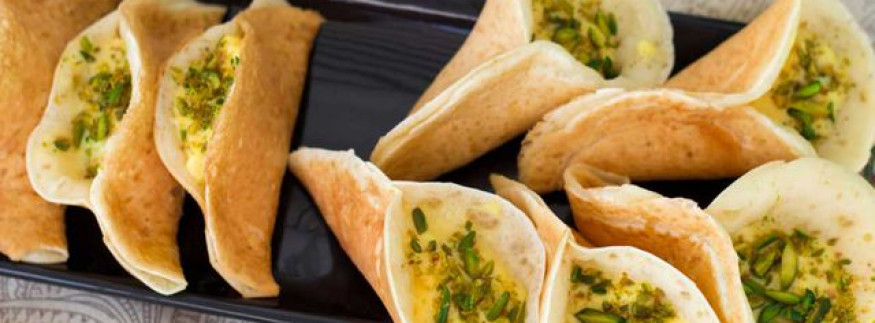
Sherif Khairy
When the Holy Month comes around, we instantly think of Tamr Hendy, Karkadeih, and of course, El-Qatayef.
Never mind the silly trend of naming them cute lips – ughh, El-Qatayef are a delicious part of an Egyptian meal that is as tasty as it is diverse. The dough can be savoury when filled with cheese, or chicken, or even beef. Anything goes with El-Qatayef, some prefer the sweet side of them, filled with coconuts, raisins, or nuts, and of course, the delicious sugary syrup.
The moon (hilal) shaped bite is a staple at Egyptian tables today. But how did it become so? A book named, Colloquial Shami Proverbs, by Nizar Al-Aswad, outlines that El-Qatayef date back to the late Umayyad era, in the Hijri year 132 to be exact. It was also referred to in the Fatimid era, as it was served on a beautifully presented tray. In that reference, the verb used stems from the same origin as Qatayef, and that verb means “to enjoy a thing’s appearance.”
According to these sources, the first person ever to eat El-Qatayef was the Umayyad Caliph Sulaiman ibn Abdul Malik in the Hijri year 98 in Ramadan. As for the naming, there are a number of varying stories. While some trace it back to the Fatimid era when the name came from the aforementioned verb, others believe that the term was coined because El-Qatayef had the same texture as plush cloth, which is “qatifa” in Arabic.
While the stories may not corroborate any specific account per se, the people definitely agree on one thing; El-Qatayef are delicious. So be proud of their origin, their true Arabic name, and don’t forget to have some savoury or sweet bites right after Iftar. Happy eating, Cairenes.
recommended
 Restaurants
Restaurants
Cairo's Ramen Revival: 5 Must-Try Bowls Around the City
Asian Food Asian Restaurants Cafés
Cafés



